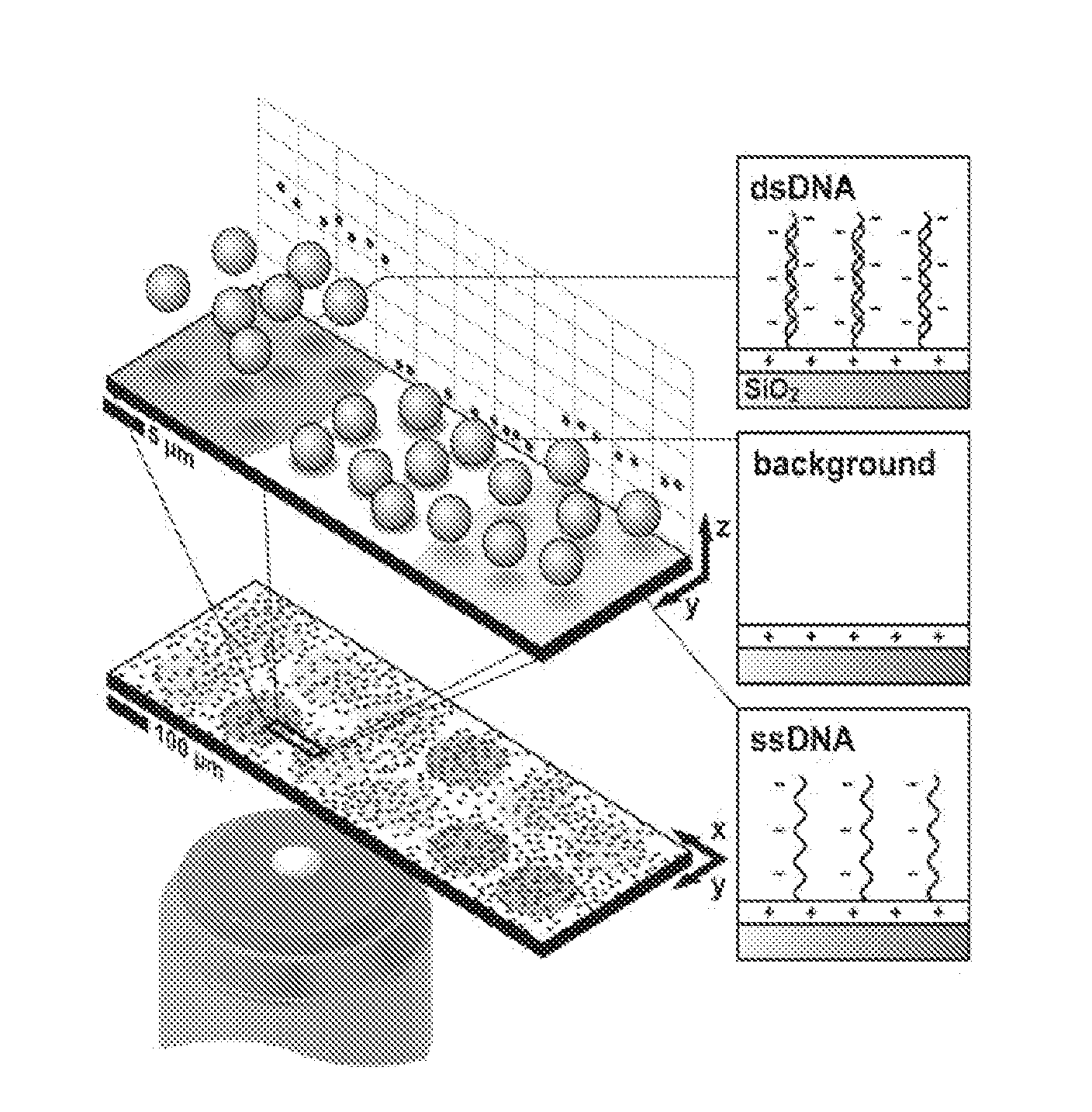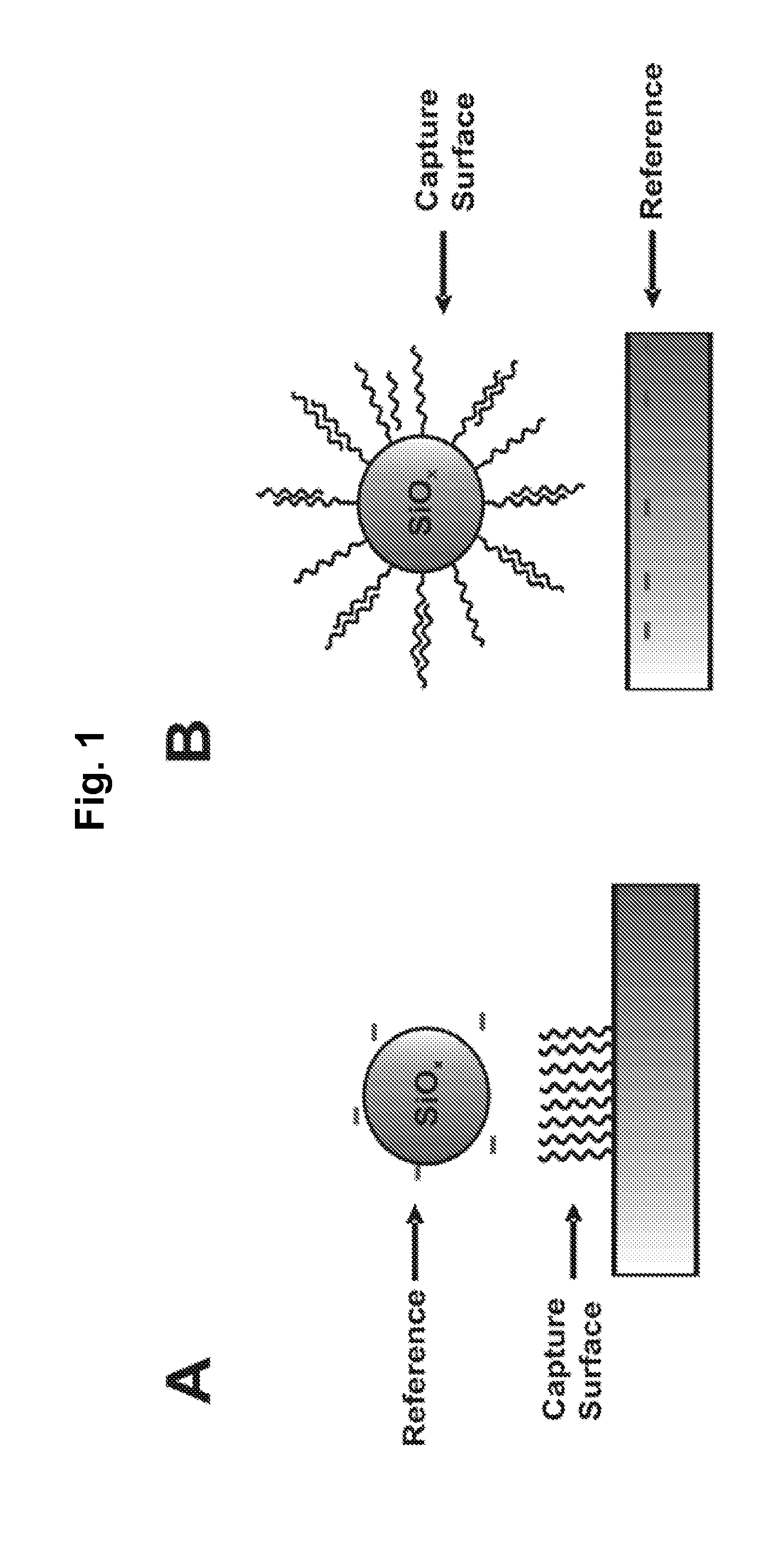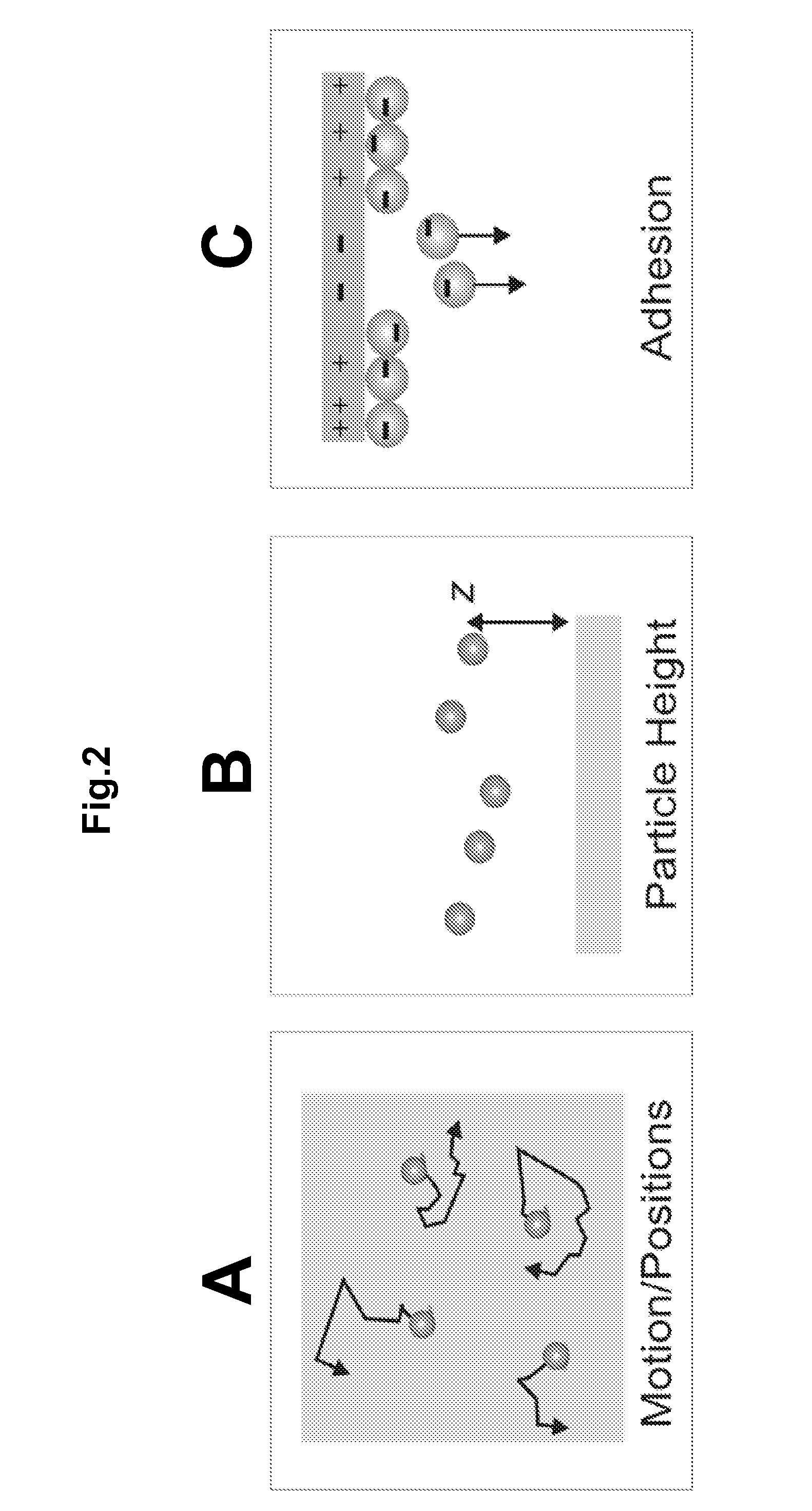Particle-Based Electrostatic Sensing and Detection
a particle-based electrostatic and sensing technology, applied in the field of electrostatic imaging and electrostatic-based sensing, measurement and detection of charges and charged materials, can solve the problems of high cost, time-consuming and costly chemical labeling, reverse transcription, and high-power excitation sources, and none of these have gained widespread us
- Summary
- Abstract
- Description
- Claims
- Application Information
AI Technical Summary
Benefits of technology
Problems solved by technology
Method used
Image
Examples
example 1
Electrostatic Response Using a Microarray
[0094]To examine the electrostatic response across a range of DNA densities, a series of spots was printed with binary mixtures formed from ratios of A and B on a microarray (FIG. 5A). In each series, the total ssDNA density was maintained while linearly adjusting the mole fraction of A from 0 to 1. Since both A and B strands are electrostatically and sterically identical, the hybridization efficiency at each spot remains constant. (Peterson, A., Heaton, R. & Georgiadis, R. The effect of surface probe density on DNA hybridization. Nucleic Acids Research 29, 5163-5168 (2001)). Therefore, after hybridization, the density of A′ is linearly related to the density of A strands at each spot, and the total DNA density varies linearly.
[0095]The charge density map of two of these series, printed with total ssDNA concentrations of 5 and 6 μM respectively, show a gradual increase in charge density as a function of the mol fraction of A (FIG. 5A). The ch...
example 2
Multiplexing Electrostatic Response Using Microarray
[0107]To demonstrate that this method is truly massively parallel and can be used to readout conventional microarrays, DNA spots were printed on a standard 1″×3″ glass microscope slide at a density >1000 spots / cm2. Arrays were imaged after hybridizing with 50 nM Cy3-B′ over a 1 sq. in. area by fluorescence and dark field scattering from electrostatically adsorbed 2.34 μm-diameter silica microspheres. Both fluorescence and dark field (negative contrast) images reveal specific hybridization to complimentary spots (FIG. 6D).
example 3
Electrostatic Readout in Gene Expression Profiling
[0108]Since gene expression profiling is the most widely implemented application of DNA microarray technology, it is important to demonstrate that electrostatic readout can be applied to physiological samples with complex background. To demonstrate this we focused on detection of the human β-actin mRNA in purified but unamplified poly(A)-RNA extracted from human breast adenocarcinoma (MCF-7) cells. The β-actin housekeeping gene served as a positive control to demonstrate a specific transcript could be identified in the complex background of cellular mRNA. Prior to measurements, the unamplified poly(A)-RNA was randomly fragmented to 60-200 bp in length to better match probe lengths, and hybridizations were performed for 20 min. with 50 ng of RNA in 30 μl of 1×SSC heated to 60° C. (FIG. 7A). Dark field imaging of arrays interrogated with 2.34 μm diameter silica spheres indicates the electrostatic response of the β-actin probe spot rela...
PUM
| Property | Measurement | Unit |
|---|---|---|
| Length | aaaaa | aaaaa |
| Length | aaaaa | aaaaa |
| Length | aaaaa | aaaaa |
Abstract
Description
Claims
Application Information
 Login to View More
Login to View More - R&D
- Intellectual Property
- Life Sciences
- Materials
- Tech Scout
- Unparalleled Data Quality
- Higher Quality Content
- 60% Fewer Hallucinations
Browse by: Latest US Patents, China's latest patents, Technical Efficacy Thesaurus, Application Domain, Technology Topic, Popular Technical Reports.
© 2025 PatSnap. All rights reserved.Legal|Privacy policy|Modern Slavery Act Transparency Statement|Sitemap|About US| Contact US: help@patsnap.com



